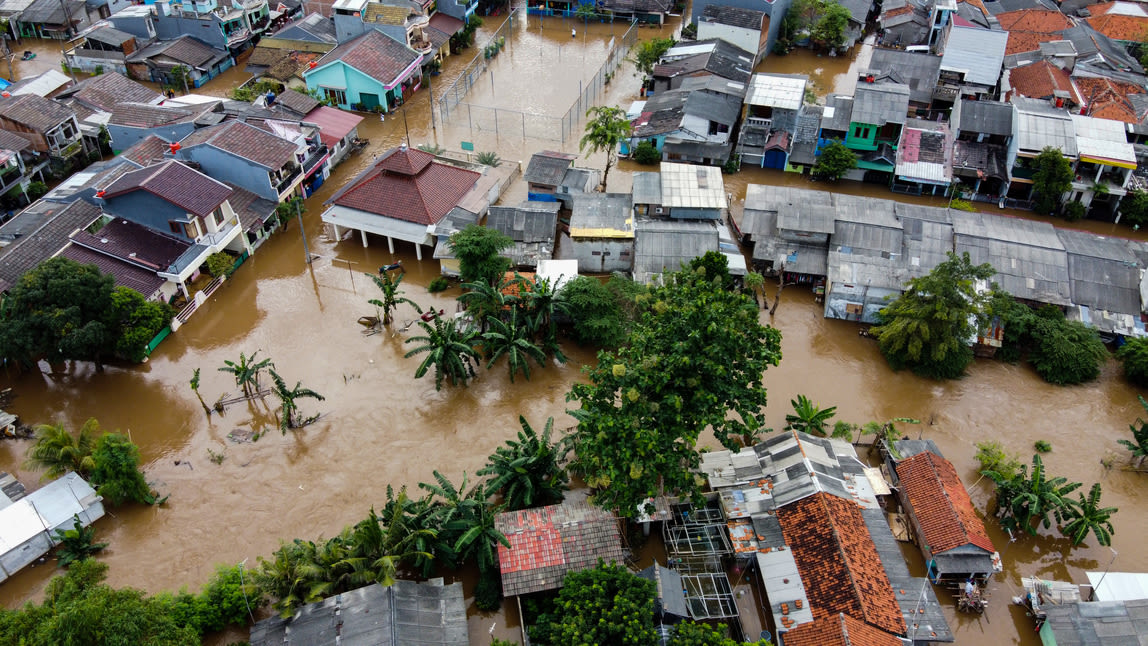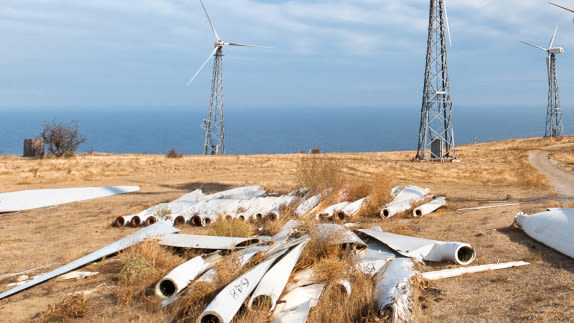It's time to include the circular economy in the climate narrative.
The hit musical Hamilton is coming to my local theatre in spring 2025. But despite having loved it ever since Disney+ streamed it as a pandemic pick-me-up – and having joined said theatre’s loyalty programme in anticipation of this exact moment – I still haven’t booked tickets. The business-as-usual of life has so far prevented me from turning ambition into action. Why? Because, to paraphrase the famous protagonist himself, thinking past tomorrow is hard. Knowing something and doing something are not the same thing.
It’s an inertia that can also be seen in the face of our collective climate crisis. Scientists have been warning of climate change and its anthropogenic origins since 1938, before Hamilton creator Lin Manuel Miranda’s parents were even born. We are now in our third decade of UN Climate Change Conference of the Parties (COP) talks, established to bring the international decision-making community together to agree on solution pathways towards the greatest challenge of our time. And yet, while its twenty-first annual convention (COP21) in 2015 famously yielded the world’s greatest diplomatic success to date in the form of The Paris Agreement, the gap between tomorrow’s goals and today’s action yawns wide open. This year, the first Global Stocktake, released by the United Nations Framework Convention on Climate Change (UNFCCC), concluded that, based on current commitments, we are still at risk of hitting 2.6 degrees hotter than pre-industrial times by 2050. Already, we have breached 1.2 degrees.
The facts and effects of climate change are self-evident. This year alone – the hottest for millenia – we’ve seen a sixth planetary boundary breached, oceans rise and begin to change colour, and the likelihood of North American wildfires more than double. In the time it took me to write that last sentence, the Bloomberg Carbon Clock has registered many more parts per million of CO2e entering the earth’s atmosphere. As UN Secretary-General António Guterres warned in his opening remarks to the recent Climate Ambition Summit in New York, we’re running out of time. At this point, the climate crisis is no longer merely a reflection of past action, but a symptom of present inaction. On its 28th anniversary in Dubai, this year’s COP looks set to be the toughest so far.
There is still time to make the changes we need, both in terms of mitigating current and future emissions and adapting and building the resilience needed to live with the realities of a world that is 1.5 degrees hotter. But this window is rapidly narrowing. And even whilst it closes, we cannot reduce our effort – every 0.01 temperature degree makes a difference. In his pre address to excellencies and colleagues, COP28 President-Designate Dr. Sultan Ahmed Al Jaber stressed the need to ensure this event became “a defining milestone to accelerate action and deliver real results.” For this to happen, it is essential to recognise both the complexity of the climate challenge and the interconnectedness and multiplicity of climate solutions. While the energy transition garners the most headlines and is vital to meeting climate goals, it only tells half the story. Alone, renewable energyrenewable energyEnergy derived from resources that are not depleted on timescales relevant to the economy, i.e. not geological timescales. and energy efficiency measures will not be enough to tackle climate change. Our current economic system – based on an outdated, extractive, linear model – is the root cause of the triple planetary crisis (constituting climate change, pollution, and biodiversity loss).
The circular economy offers a systems transformation that can help bring leading actors and all-system actions together in cohesive chorus
Pulling off the feat necessary to change the course of climate change requires a rethink of not only how we produce energy but how we produce, consume, and waste in our current linear economylinear economyAn economy in which finite resources are extracted to make products that are used - generally not to their full potential - and then thrown away ('take-make-waste').. This means reshaping everything from how we grow, manufacture, and package food products, to how we construct and use the energy assets, infrastructure, and buildings we need, to how we design, make, and wear clothes. Beyond redesigning the products and services we need, the transition to a circular economycircular economyA systems solution framework that tackles global challenges like climate change, biodiversity loss, waste, and pollution. It is based on three principles, driven by design: eliminate waste and pollution, circulate products and materials (at their highest value), and regenerate nature. requires a reimagining of how we define value, channel finance, measure success, configure our business models, and shape global supply chains.
A circular economy approach can work hand in hand with the energy transition. It can help the latter to reach its full emissions reduction potential and without the latter inadvertently creating additional problems such as waste mounts, pollution, and additional biodiversity loss. The materials needed to capture and store the vast amount of renewable energy capacity required to deliver the energy transition themselves have an emissions profile and are finite. Finding ways to eliminate waste and pollution from energy supply chains and reduce emissions, keep in circulation valuable materials and products after first use, and regenerate nature is key to the energy transition itself. As the rollout of renewable energy scales at pace, it is important to ensure that the critical raw materials, essential assets (from solar panels to wind turbines) and associated infrastructure needed to make it happen are designed and built for a circular economy.

If COP28 succeeds in agreeing to triple renewable energy capacity by 2030, the need to integrate these two vital strands of climate action – both the energy transition and the transition to a circular economy – will strengthen even further.
Embedding a circular economy approach within climate actions and strategies is about delivering a systemic transformation of our economies and how we produce and consume. The good news is that calls for changes that enable such a transformation of our economies rather than singular, isolated solutions are growing. The Global Stocktake repeatedly highlights the need for systems transformation and calls for an “all of economy, all of society” approach to climate action, recognising the integral role of holistic and comprehensive approaches that address both environmental and social outcomes. Similar connecting themes were also reflected in the most recent IPCC Sixth Assessment Report issued in March 2023. And, just as Dr. Al Jaber called for ambition across all outcomes, UNFCCC Executive Secretary Simon Stiell urged commitment to common action in his opening speech at the Middle East and North Africa (MENA) Climate Week in Riyadh.
The circular economy offers a systemic response to climate change. Its core principles, considered in complement and implemented in unison with the transition to renewable energy, present a powerful portfolio of climate solutions.
By eliminating waste and pollution, we can reduce and avoid emissions across the value chain
By circulating products and materials, we can enable embodied emissions to be retained within the economy
By regenerating nature and natural systems, we can improve carbon sequestration
A circular economy addresses emissions at point of conception rather than as an afterthought. In doing so, it can help support and complement global decarbonisation strategies and net zero efforts towards a common goal: an economically and environmentally resilient economy that operates within planetary boundaries and which can enhance the livelihoods, health, and wellbeing of people. To fully realise both its climate mitigation potential and economic opportunity, the circular economy needs to take hold across systems and sectors.
Examples of where and how business and policy-led circular economy actions can contribute to the global climate action landscape are increasing, alongside individual action cases. Launched at 2023 MENA Climate Week, the UN’s practical toolbox ‘Building Circularity into Nationally Determined Contributions (NDCs)’, is designed to support countries to better integrate circular economy interventions into their climate plans in tandem with considered efforts to ensure a just and equitable transition. Meanwhile, the inclusion of circular economy actions within the UNFCCC’s ‘Marrakech Partnership for Global Climate Action’ Climate Action Pathways, such as the Industry Pathway, is also indicative of this positive trend.
In a world in which the phrase ‘tipping points’ tends to be associated with irreversible impacts and multi-system collapse, it is important to remember that, while climate change is a threat multiplier, the circular economy can be a solutions multiplier.
As climate policy expert Dr. Ayana Elizabeth Johnson says in her book ‘All We Can Save’, we need “every solution and every solver” to help us create a new declaration (to quote Hamilton) for a world in which economic activity is decoupled from the consumption of finite resources.

In pursuit of this global mission, it is vital that we harness not only the power of renewable energy but also the energy of individuals, businesses, financiers, and policymakers to deliver the transition from a linear to a circular economy that works within planetary boundaries. We need everyone around the table to change the shape of our economy at its very core – from those working to unlock a reusereuseThe repeated use of a product or component for its intended purpose without significant modification. revolution to those embedding circular business models such as repairrepairOperation by which a faulty or broken product or component is returned back to a usable state to fulfil its intended use. and remanufacturing which keep products and materials in use.
Thinking about tomorrow is hard, but essential. It can also be exciting. So, as the sun comes up in one of the sunniest cities in the world in the coming weeks, world leaders, ministers, negotiators, and innovators can seize the circular economy opportunity and ensure that this circular economy lens for how we produce and consume is integrated into the global climate action narrative right alongside and in harmony with the energy transition.
Right, I’m off to book those tickets.
With special thanks to Miranda Schnitger, Climate Lead, Ellen MacArthur Foundation for her expertise and insights ahead of COP28 in Dubai.

COP28 Events
See COP28 events we are participating in, watch livestreams and catchup on previous COP activities.







